Seventy years ago, in the summer of 1946, an epidemic of poliomyelitis was inflicted upon Minneapolis and other cities throughout Minnesota. To reduce the spread of disease, Minneapolis officials asked that children be refused to enter theaters, parks, beaches, and other crowded places.
Children were later voluntarily quarantined in their homes for the sake of their health. Parents grew weary as their children, lacking entertainment and activity, became agitated while stuck indoors during summer vacation.
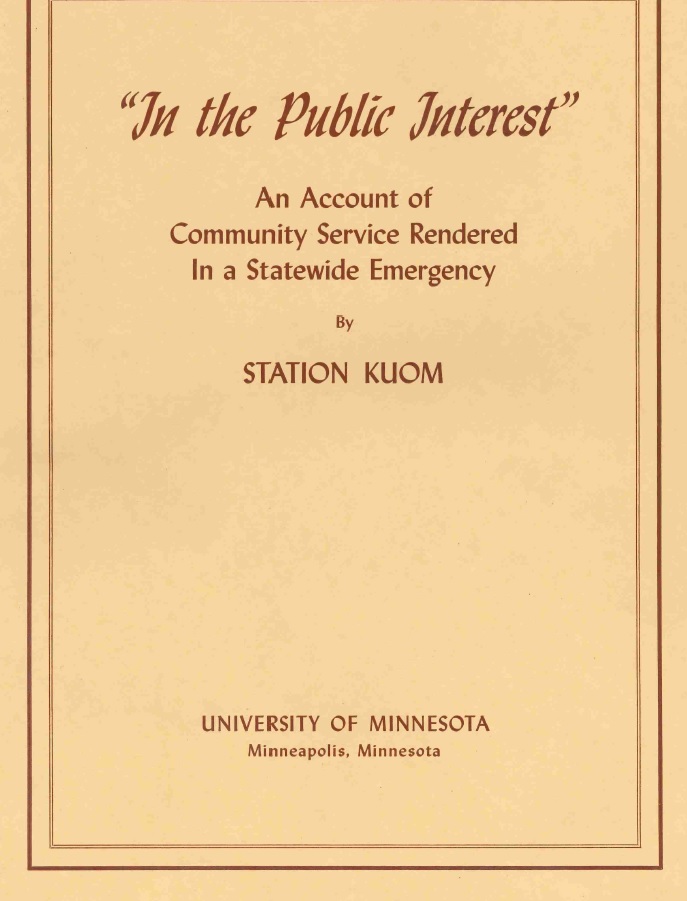
“In the Public Interest,” An Account of Community Service Rendered In a Statewide Emergency by Station KUOM.
“This is the story of a challenge and radio’s answer,” wrote Burton Paulu, manager of University of Minnesota radio station KUOM, in a report titled In the Public Interest. The publication tells the story of how KUOM answered the challenge to entertain and engage thousands of children confined to their homes during a major public health crisis in Minnesota.
In cooperation with local educators, Paulu and program director Betty Girling changed the regular station schedule and created an improvised series of programs aimed to attract the attention of homebound youth.
The series “KUOM for Kids” debuted on July 31, 1946. It featured programs such as “Rhyme Time,” where announcers read poems sent to the station by young listeners. “Drawing to Music” invited listeners to make drawings and paintings in response to selected musical numbers.
Within the six-week period of the broadcasts, 9,432 original illustrations were sent to the station. For each program, recognition of the “best” pictures in each of three age groups was announced over the air.
There was a musical request program, a weekly dramatic production, story-book readings, and a sports discussion program. Columnist and radio personality George Grim read comics and told jokes during “Uncle Ray and the Funnies” at 7:00 p.m. on weeknights.
On Saturdays, Dr. William A. O’Brien, professor of public health, discussed the causes of polio infection and methods of prevention on “Your Health and You.”
The epidemic continued throughout the summer, which caused state officials to postpone the start of the school year by two weeks. KUOM producers again collaborated with local teachers and school administrators to create “School By Air,” a series of orientation programs that were broadcasted during the two-week postponement. Topics included what to expect on the first day of school, hygiene, state geography, and intercultural understanding.
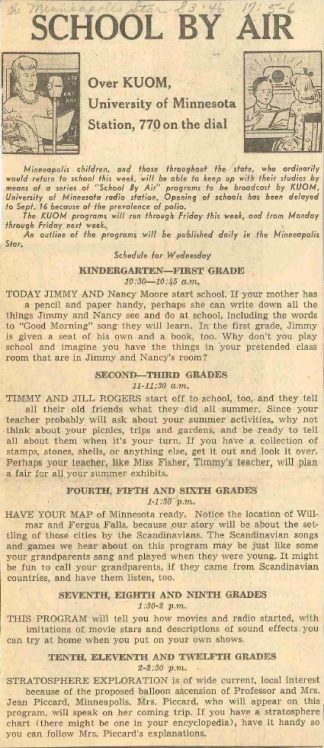
Local newspapers, to include the Minneapolis Star in the September 3, 1946 edition, regularly published and promoted the schedule of “School By Air” programs.
When then epidemic ended and schools re-opened on September 16, KUOM reverted back to a regular broadcasting schedule. The effort that the station provided to entertain and engage youth in the listening area did not go unnoticed. Mayor Hubert Humphrey wrote,
“Your contribution through the facilities of the station to the welfare of our city cannot be overestimated. You have done much to make this serious period in our community life a much more pleasant experience for thousands of young people.”
Letters poured in from listeners — from both parents and children — thanking the station staff for their service.
Over the course of 6½ weeks in the summer of 1946, radio station KUOM devoted more than 150 hours of broadcasting, or one third of its program schedule, to programs for children. Over 125 individuals and organizations representing the University, Twin Cities radio stations, and civic and state organizations contributed funding, on-air talent, engineering, writing, and promotion for the broadcasts.
Station manager Paulu reflected upon KUOM’s answer to the public health challenge:
“It is an answer of which KUOM is proud; for it constituted not only a significant educational and public service project, but also a not-often-equaled example of cooperation between an educational radio station and the community it serves.”
This event is one of the many examples of how KUOM answered community challenges throughout its history.
To learn more, visit the online exhibit “In the Public Interest: An Account of Community Service Rendered In a Statewide Emergency by Station KUOM“. The “KUOM program files” are preserved in the University of Minnesota Radio and Television Broadcasting records at the University of Minnesota Archives. In addition to these files, the Betty Thomas Girling papers provide further documentation of the KUOM “polio project.” Items included within this exhibit were selected from these collections and are cited on the item record accordingly.
—Rebecca Toov is the University Archives Collections Archivist. To learn more about the University of Minnesota Archives, please visit www.lib.umn.edu/uarchives.


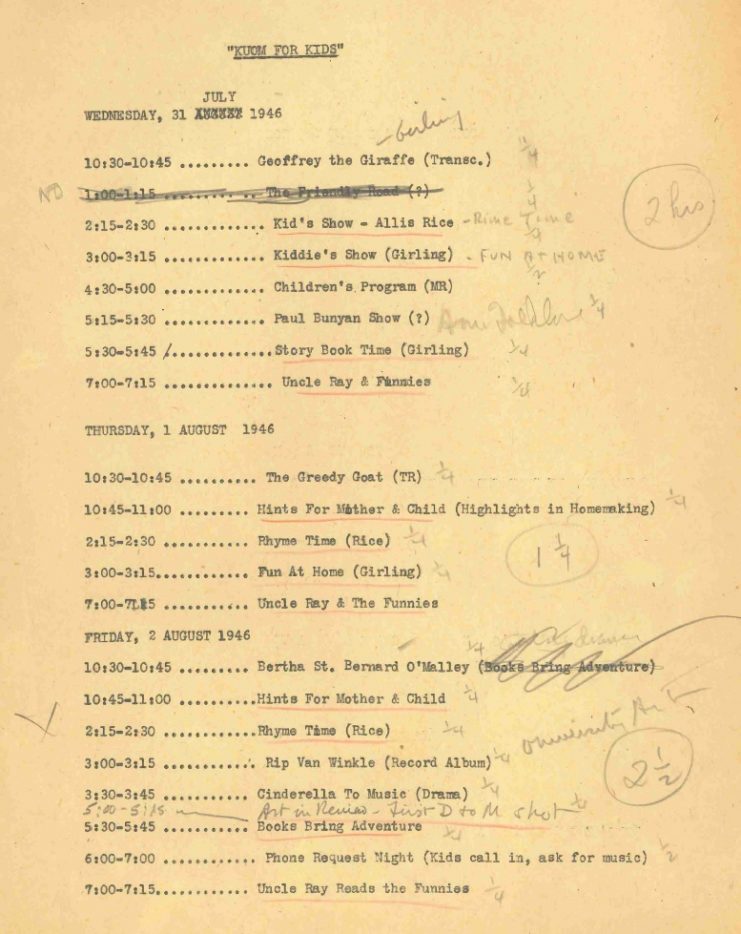
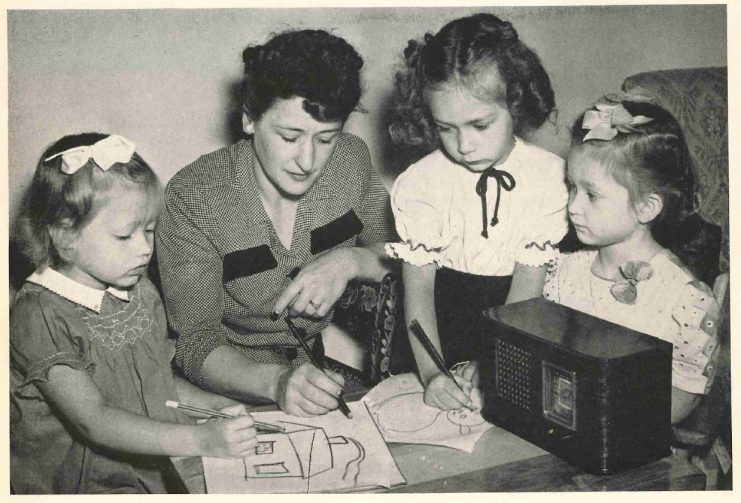
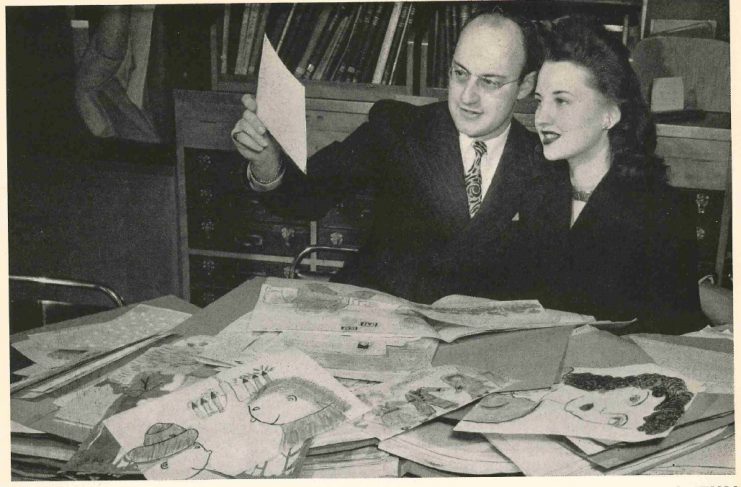
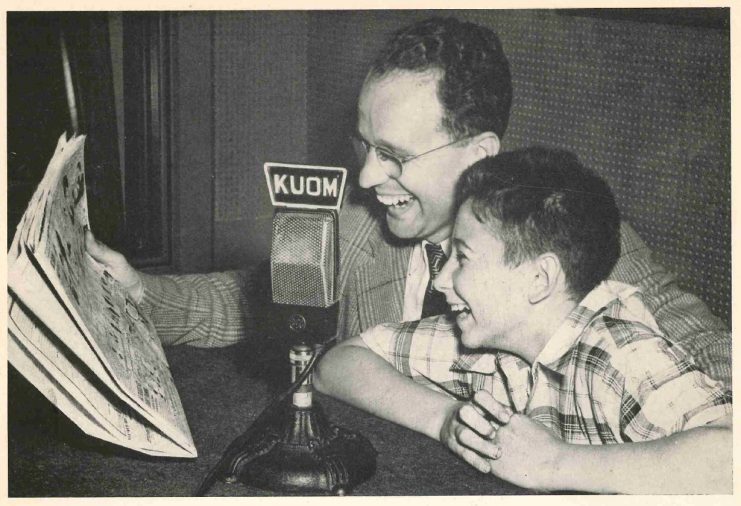
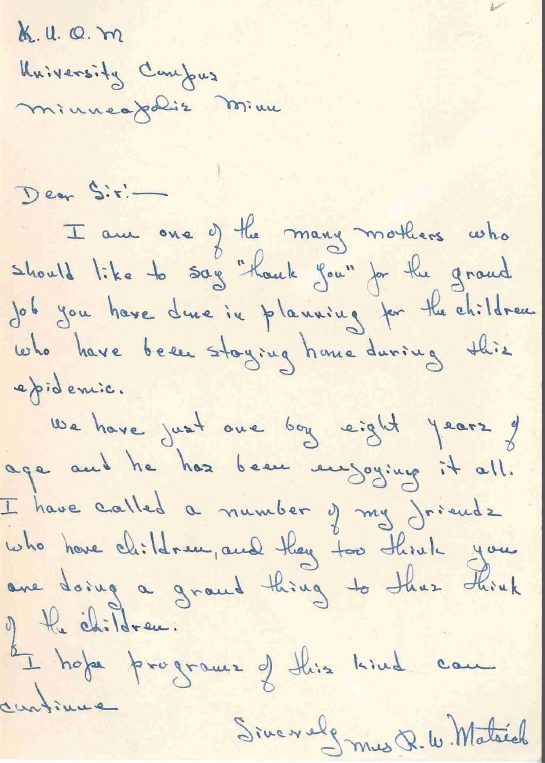
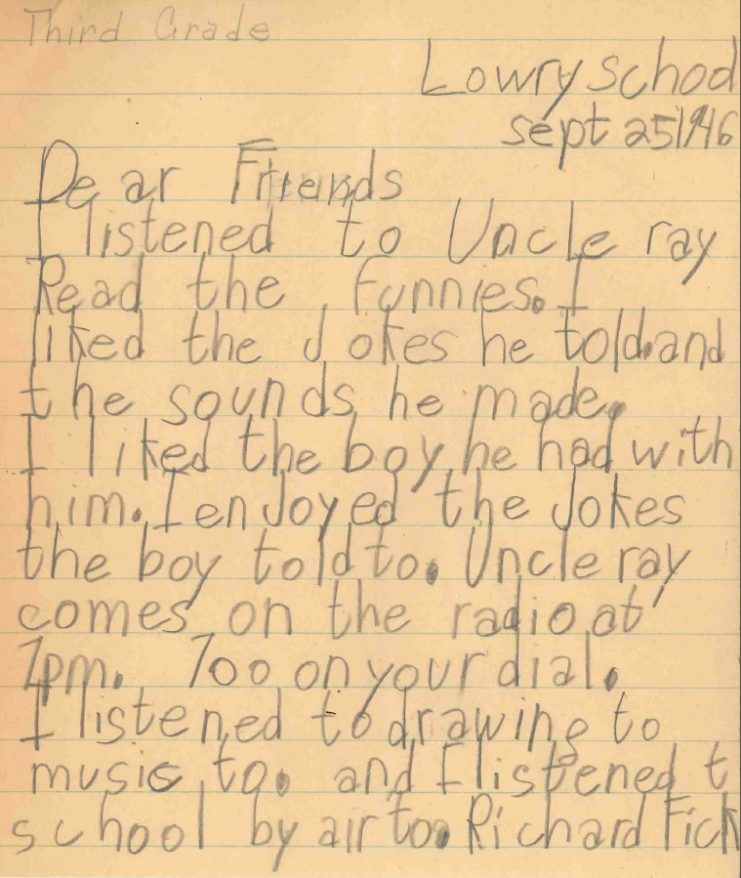



Are there recordings online of the Drawing to Music shows?